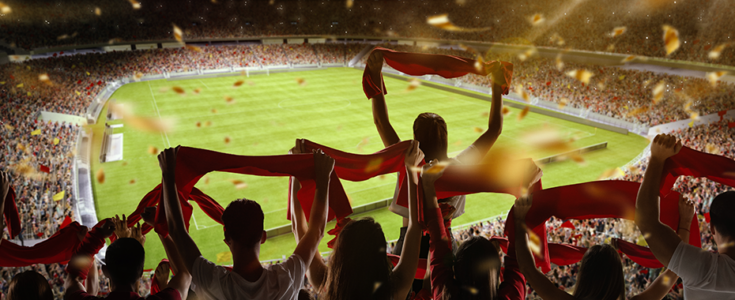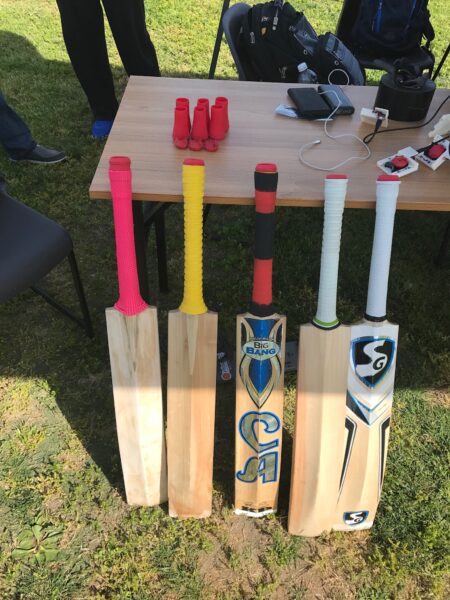

Some of the biggest moments in sports history have been determined by referees. But thanks to the introduction of semi-automated offside technology, the 2022 FIFA World Cup will be an exception. In soccer, where the “offside rule” frequently stops play and leads to impassioned arguments on both sides, IoT technology is solving an age-old problem. Using a special sensor embedded into the ball, as well as 12 tracking cameras installed in the stadiums, FIFA can measure the exact position of the players and the ball at any given moment and ensure the correct offside judgment is made every time.
The Use of IoT Technology in Sport
Every industry imaginable is harnessing the power of IoT to become more competitive – and the world of sports is no different. Using sensors embedded in devices, the sports industry now has unprecedented access to data that can inform, and transform, player performance, safety, real-time decision-making, as well as how fans interact and engage with their favorite sports.
Sports have a long history of leveraging the latest technology. Some – like Video Assistant Referee (VAR) or Hawk-Eye – augment the referee’s ability to settle decisions fairly. Others – like Rapsodo or SportVU – inform us about the position and speed of the ball or players with the help of advanced cameras. IoT technologies take this one step further. With embedded, connected sensors at the heart of the action, IoT technology captures every movement, angle, player, and contact with the ball.
Data from IoT-embedded sports tech is helping to give sports teams and the organizations behind them a competitive edge using advanced analytics and visualization techniques. The global sports technology market reached $12.7 billion in 2021 and is forecast to grow at a CAGR of nearly 20% through 2030. These numbers are driven in large part by the growth of IoT and data analytics.
With IoT, Simplicity Masks Complexity
What is something elite athletes and trailblazing IoT use cases (such as FIFA’s semi-automated offside technology) have in common? They make it all look so easy. The reality of IoT development is that this simplicity is the result of a complex network of systems working together seamlessly.
The sensor embedded in the ball is only the beginning of the story. Supporting the operation of that sensor is a full IoT technology stack powered by advanced data analytics solutions. Delivery teams require specialist experience to navigate a wide variety of considerations. New communication protocols, complex integration scenarios, and sector-specific rules of engagement are all major implication that IoT development teams need to address. For these reasons, sports organizations looking to accelerate time to market and minimize risk will usually partner with a digital engineering firm that specializes in IoT capabilities.
How Sensor Technology is Re-shaping Sports
IoT use cases are helping sports organizations achieve competitive advantages that include:
Distinct use cases are emerging in which sensors are used in different ways. Below are three major examples.
1. Sports equipment
Sports equipment manufacturers have always sought to integrate the latest, technologically advanced materials into their products. Sensors improve performance by supplying athletes with a continual stream of data that they can use to adapt the way they play or train. Sensors are being integrated into many kinds of equipment. For example, Apexon has worked with chip-maker Intel in the development of its sophisticated sports equipment sensors that can be mounted on bats in cricket and baseball. These sensors capture real-time data about the players’ performance that can be used to tailor training and skills development.

Apexon worked with Intel to engineer sports sensors for cricket and baseball bats to enable seamless data access and improved user experience
2. Wearables
Elite and amateur athletes alike have embraced wearables such as smartwatches and heart rate monitors. Increasingly, the focus is now on smart clothing – textiles embedded with sensors that can monitor many different performance markers. As well as supplying personalized data on distance, speed, and heart rate, smart wearables can measure posture, the angle of the body, exertion, and even sweat.
Shoes embedded with sensors have been used to help athletes to remain injury-free. In athletics, smart trainers help monitor hurdle clearance. And in golf, NeuroPeak Pro’s sensor-embedded belt actively coaches the likes of Bryson DeChambeau and Jordan Spieth as they play.
3. Venues
Sports stadiums around the world are upgrading their facilities to include sophisticated sensors that monitor every aspect of the fan experience, from the availability of car parking spaces to hot dogs, and everything in between. Sensors embedded in pitches impact gameplay directly, but stadiums can also shape how fans experience games in other ways. Smart stadiums use sensors to manage the flow of spectators in the venue, ensuring fan safety as well as a more pleasurable experience. Sensors can even help in preventing the spread of infections by monitoring body temperature, air quality, and hygiene levels.
The Future of IoT in Sport
The IoT has the potential to greatly enhance the sports industry as sensors, data processing, analytics, and AI/ML technologies continue to advance. As well as tracking performance, IoT-enabled devices will increasingly provide live updates about athletes’ performance. This kind of real-time tracking is valuable to coaches and athletes. Additionally, when made available to fans, player data enhances their enjoyment and engagement in the action too.
However, in addition to improving the sporting experience for elite athletes and fans, sports sensors will continue to improve the health and fitness of ordinary people. As the popularity of fitness wearables and apps demonstrates, people of all fitness levels want to engage with their personalized health data. The IoT will be instrumental in delivering a far more tailored fitness experience to athletes and enthusiasts alike in the future.
Apexon helps companies devise, engineer, and roll out IoT implementations faster and with less risk. To learn more, please visit Apexon’s IoT Development Services or get in touch directly using the form below.